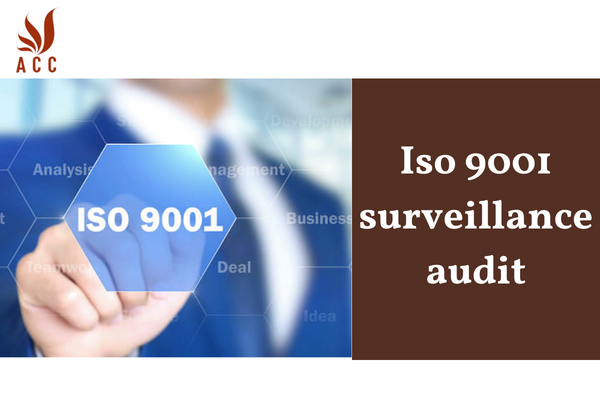ISO 9001 is a widely recognized quality management system (QMS) standard that helps organizations improve their performance and efficiency. One of the key components of ISO 9001 is the requirement for surveillance audits.
Surveillance audits are conducted by an independent third-party auditor to assess whether an organization is continuing to comply with the requirements of ISO 9001. These audits are typically conducted annually, but they can be conducted more frequently depending on the organization's risk profile.

Iso 9001 surveillance audit
1. What is an ISO 9001 surveillance audit?
An ISO 9001 surveillance audit is a periodic audit conducted by an accredited certification body to ensure that an organization's quality management system (QMS) is still compliant with the requirements of ISO 9001. Surveillance audits are typically conducted every six months or once a year, depending on the certification body.
2. What are the objectives of an ISO 9001 surveillance audit?
The objectives of an ISO 9001 surveillance audit are to:
- Verify that the organization's QMS is still compliant with the requirements of ISO 9001.
- Identify any areas where the organization's QMS could be improved.
- Provide feedback to the organization on its QMS performance.
3. What are the scope and coverage of an ISO 9001 surveillance audit?
The scope of an ISO 9001 surveillance audit typically covers all the requirements of ISO 9001. However, the auditor may focus on specific areas of the QMS that are considered to be high risk or that have been identified as areas for improvement.
4. How is an ISO 9001 surveillance audit conducted?
An ISO 9001 surveillance audit typically follows a five-step process:
- Planning: The auditor meets with the organization to discuss the scope and coverage of the audit.
- Collection of evidence: The auditor collects evidence to support the organization's claims of compliance with ISO 9001.
- Evaluation of evidence: The auditor evaluates the evidence to determine whether the organization is compliant with ISO 9001.
- Reporting: The auditor reports the findings of the audit to the organization.
- The auditor follows up with the organization to ensure that any nonconformities are addressed.
5. How can organizations prepare for an ISO 9001 surveillance audit?
Organizations can prepare for an ISO 9001 surveillance audit by:
- Reviewing the requirements of ISO 9001.
- Maintaining up-to-date documentation and records.
- Implementing a process for continuous improvement.
By following these steps, organizations can help to ensure that they pass their ISO 9001 surveillance audits and maintain their certification.
6. Frequently asked questions
Question 1: What is the purpose of a surveillance audit in the ISO 9001 certification process?
Answer: The surveillance audit aims to ensure ongoing compliance with ISO 9001 standards and assess the effectiveness of the implemented quality management system.
Question 2: How frequently are surveillance audits typically conducted?
Answer: Surveillance audits are usually conducted annually, but the frequency may vary based on the organization's size, complexity, and risk factors.
Question 3: What key areas does a surveillance audit focus on?
Answer: A surveillance audit focuses on reviewing key processes, performance indicators, and any changes made to the quality management system since the last audit.
Question 4: How does the surveillance audit differ from the initial ISO 9001 certification audit?
Answer: While the initial certification audit evaluates the entire quality management system, surveillance audits concentrate on specific areas of concern or improvement identified in previous audits.
Question 5: What happens if non-conformities are identified during a surveillance audit?
Answer: If non-conformities are found, the organization must address and rectify them within a specified timeframe to maintain ISO 9001 certification.
Question 6: How does ISO 9001 surveillance contribute to continuous improvement?
Answer: Surveillance audits provide valuable feedback on the QMS's performance, helping organizations identify areas for improvement and refine their processes over time, aligning with the principle of continuous improvement in ISO 9001.
Nội dung bài viết:






Bình luận